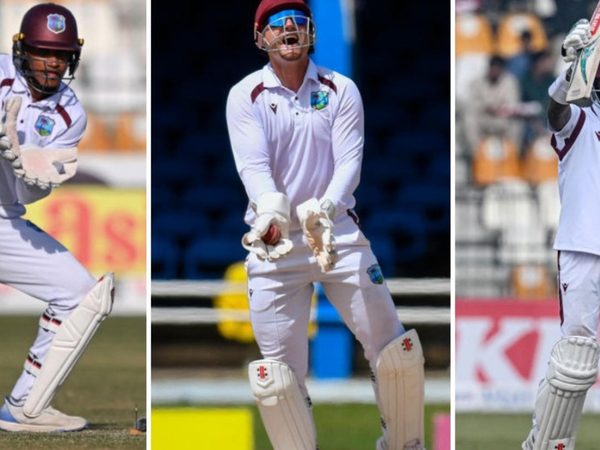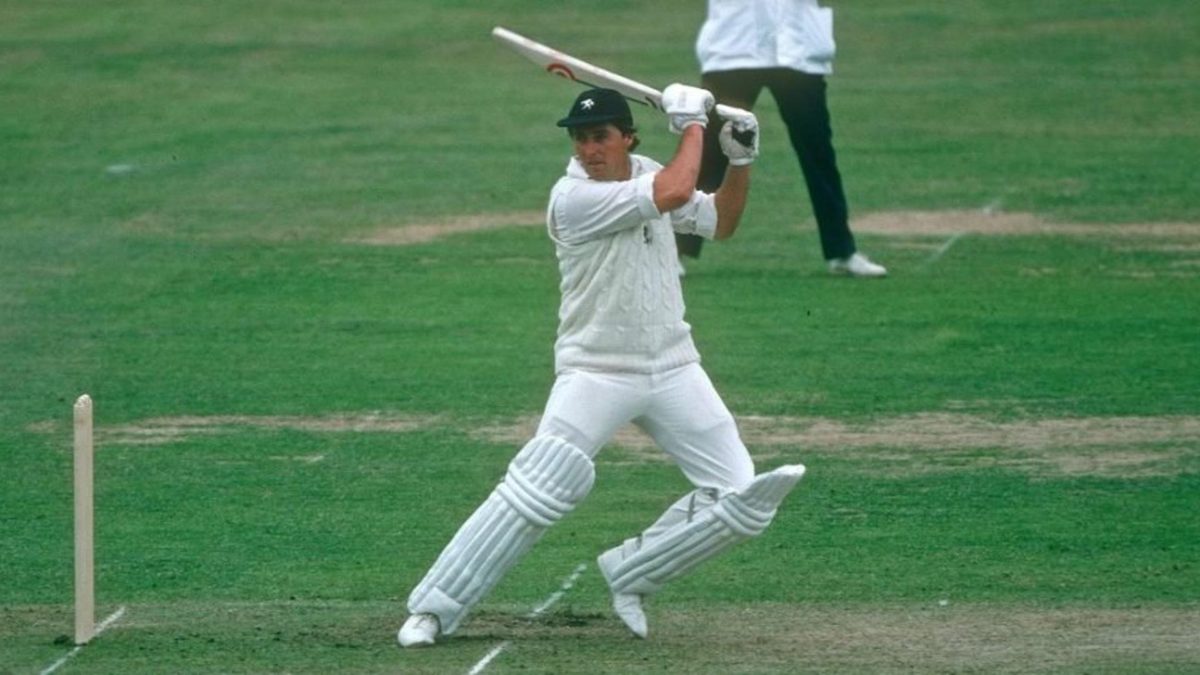
If ever a youngster could have been said to eat, drink and sleep cricket, then surely it was Bob Woolmer. On his debut in the Kent side he proved how well he had digested his early cricket intake by hitting a not-out half-century. He was hailed as an all-rounder of promise, and the only argument about Woolmer’s undoubted cricketing ability and future in the game, was whether he might become a better bowler than batsman or vice versa.
Born in India, in Kanpur, on May 14, 1948, when his father was working in the insurance business, Robert Andrew Woolmer can truthfully be said to have been associated with cricket from the cradle. For when his proud parents returned home with their new baby, his father placed a cricket ball and a bat in one corner of the cot, saying: “Son, I hope this will be your life.”
Bob Woolmer made his breakthrough as a Test player during the four-match Ashes series of 1975. His century at The Oval was far from sparkling, but it still earned him a Wisden Cricketer of the Year award.
As his cricketing development progressed in the talented Kent side, so Woolmer’s performance with both bat and ball improved, and it seemed that here indeed was a player with all-round qualities who would eventually fit into an England side.
He had great success with the ball in his first two seasons, particularly in the Sunday game, but more recently his batting has progressed even more favourably. Yet whenever he was considered a candidate for England, it was as an all-rounder that his presence was sought.
It was still as an all-rounder that he was first brought into the squad, for the England v Australia series last summer. Yet before the final Test at The Oval his presence in the side was being demanded purely as a batsman, and he responded to play a vital part in saving the game for England in that last match with a maiden Test century.
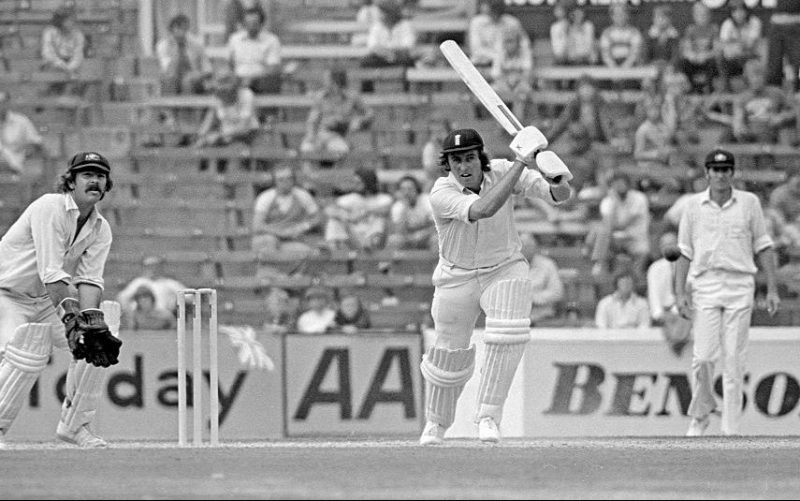 Woolmer occupied the crease for more than eight hours to help England save the Oval Test
Woolmer occupied the crease for more than eight hours to help England save the Oval Test
At the age of seven Woolmer came to England to Yardley Court preparatory school at Tonbridge. His father, a right-handed batsman and off-break bowler, had played for the Calcutta Cricket Club and for Uttar Pradesh in zonal cricket. He had instructed his son in the merits of the forward-defensive shot at a very early age, and at Yardley Court Woolmer was fortunate to find a keen cricketing staff.
Young Woolmer spent three years in the school side, switching in the last year from off-breaks to fast-medium bowling. His headmaster had advised against the move, but the schoolboy, reared on television viewing of Trueman and Statham, wanted to bowl fast.
His parents were back in England, at Tonbridge, by the time he moved to Skinners’ School, Tunbridge Wells, chosen because they played hockey, which in the winter is the game Woolmer has pursued, reaching the status of a Kent A player.
As he moved from the under-14 side into the under-15s, so he began to play club cricket for Tonbridge, where his father captained the 2nd XI. He recalls going in at No.11 in his first club game with three balls to go and the scores level. His partner walked down the wicket and advised: “Just keep the ball out of your wicket.” He did the first two, but the third was a half-volley and, as bowlers find today, that is a ball made to measure for Woolmer. He stroked it through the covers for two and the game was won.
When he was in the under-15 side his school nominated him to attend the Association of Kent Cricket Clubs at Sevenoaks. The coach was Colin Page, now the county’s manager.
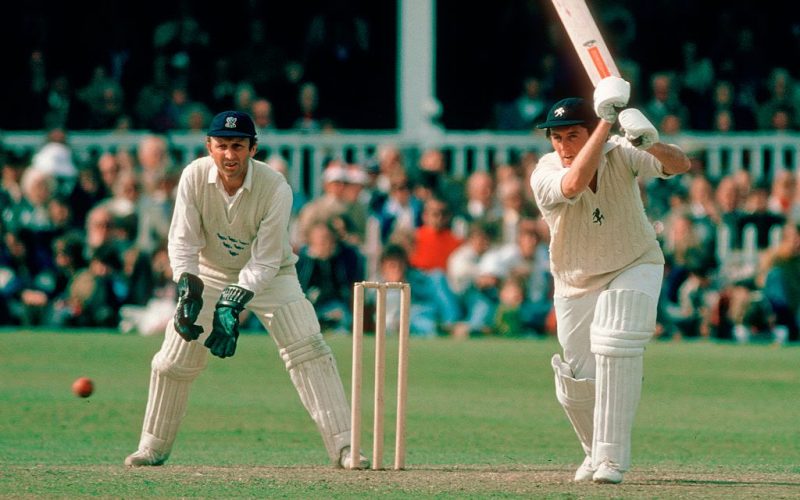 Bob Woolmer batting for Kent during the 1977 Benson and Hedges Cup quarter-final against Sussex at Canterbury
Bob Woolmer batting for Kent during the 1977 Benson and Hedges Cup quarter-final against Sussex at Canterbury
Bowling fast-medium, Woolmer picked up a lot of wickets in his three years in the school’s 1st XI. There followed games for the Kent Colts, the club & ground side and the county’s 2nd XI, plus club cricket for Tunbridge Wells on the beautiful Nevill ground. In 1967 he was employed in the sales division of ICI, taking his three weeks’ holiday to play for Kent’s 2nd XI. He was invited to join the staff, and the professional career of which he had always dreamed became a reality in 1968.
He was selected as a 12th man on his home ground in Tunbridge Wells and made his debut at Maidstone, hitting 50 not out in his first innings – against Essex. Immediately he was hailed as an all-rounder of promise. Woolmer himself had felt he was a better batsman than bowler, more a batsman who could bowl, but he did not worry – he was just happy to be playing first-class cricket.
The following season, 1969, saw the introduction of the John Player League. It was important for Woolmer. Whatever criticisms people have of Sunday-afternoon cricket, it played an important part in the development of this talented young cricketer.
With John Shepherd on tour in England with the West Indies, Woolmer became a much more regular member of the Kent side. It was not a good season for him with the bat, but his bowling prospered. He was the county’s leading wicket-taker on Sundays and in the first two seasons of the competition he was the first bowler to reach 50 wickets.
He was then bowling mainly the inswinger and he said: “I tried to bowl at a lively pace and being a newcomer I got wickets. Sunday cricket probably made me into a bowler, you have got to bowl straight and attain a good line and length.” Those attributes, particularly on Sundays, certainly brought him to the fore, although he achieved his best analysis of seven for 47 against Sussex in the Championship at Canterbury.
In 1970, Woolmer was a member of the Kent County Championship-winning side and in the last match of the season at The Oval, he was presented with his county cap by Colin Cowdrey.
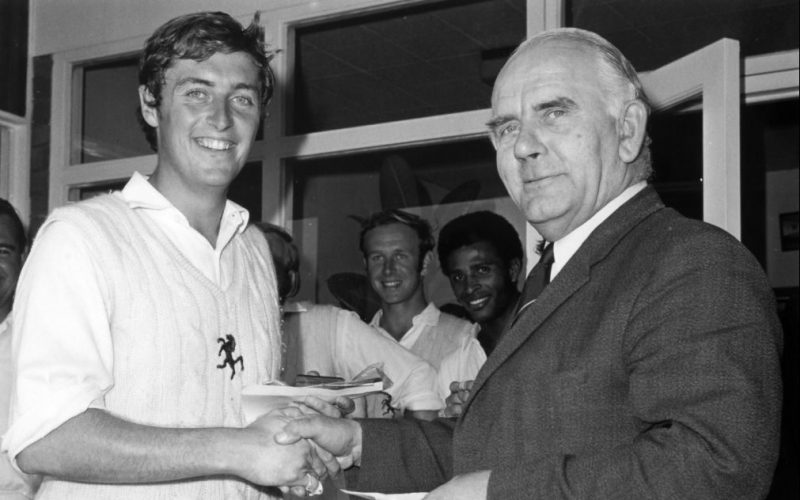 Bob Woolmer receives the Man of the Match award from Cyril Washbrook after the 1971 Gillette Cup quarter-final against Leicestershire at Grace Road
Bob Woolmer receives the Man of the Match award from Cyril Washbrook after the 1971 Gillette Cup quarter-final against Leicestershire at Grace Road
Now the young cricketer was beginning to work things out for himself, sifting the advice he was given and making an important step forward during the winter of 1970/71 when he coached in Johannesburg. There, practising in the nets, he learned to bowl the genuine away-swinger. In 1971 he was still batting well down the order for Kent, and in 1972 it was no doubt his bowling ability – or or a reputation as a bowler who could bat – which won him a one-day cap against the Australians. But his batting, or lack of it with Kent, was concerning him. He appreciated, with the county’s strength, that there was no way he could get up the order.
Kent did what they could to help him in this respect during 1973, but opportunities were limited. Meanwhile there was no international recognition that summer at any level. Having been talked about as a candidate for the previous winter’s tour of India and Pakistan, he was again in the lists, as it were, for the 1973/74 tour of the West Indies.
He did not go and indeed in his own mind did not feel he was quite good enough to go. Instead, he went to South Africa with the D.H. Robins XI and followed that with a coaching appointment under Barry Richards in Durban with the Kingsmead Mynahs club, playing also for Natal. It was an eventful and important winter. In Durban he met his future wife, Gill – they were married the following winter – and his batting improved tremendously. Batting at No.5 for Natal he took the chance, which had previously been lacking, to build an innings.
During the tour, however, it had become obvious that other English counties were prepared to give him that No.5 place in their side and Woolmer, who had no desire to leave Kent, was faced with an important decision which could affect his whole career.
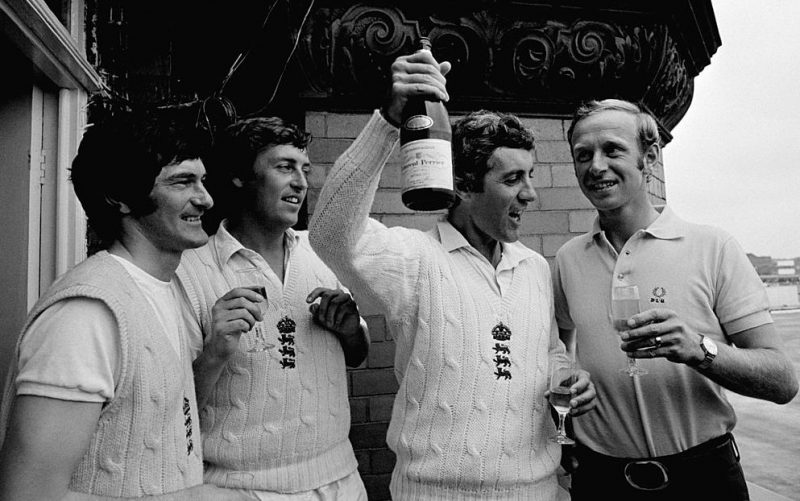 Woolmer with England captain Mike Brearley, Alan Knott and Derek Underwood celebrating England’s win in the second Ashes Test of the 1977 series at Old Trafford
Woolmer with England captain Mike Brearley, Alan Knott and Derek Underwood celebrating England’s win in the second Ashes Test of the 1977 series at Old Trafford
He was fortunate enough to be able to discuss the problem immediately with his Kent manager, Leslie Ames, who was in fact managing D.H.Robins’s side. The problem was solved satisfactorily, and in 1974 Kent batted him at No.5 in the three-day game and lower down the order in limited-overs matches.
Woolmer responded by scoring three centuries, totalling 802 for the season – and still taking 56 wickets. So in 1974 he was feeling that he could make the grade at county level as a genuine all-rounder. His own belief was that his bowling might not have been ready for Test cricket and it seemed that not everyone realised that he had been batting higher up the order – and getting runs
It was still his reputation as a bowler that appeared to be emphasised, and although he played in a one-day international against India he did not book himself a plane ticket to Australia, although he must have been a strong candidate.
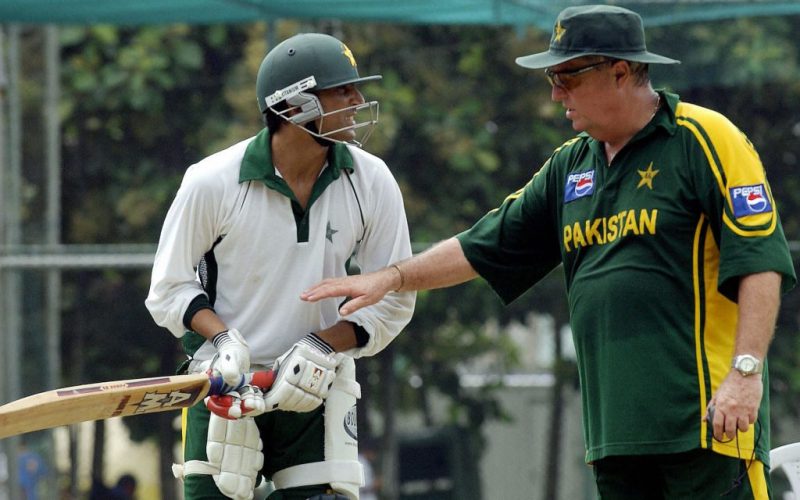 Woolmer was highly regarded as a coach and had major stints with South Africa and Pakistan
Woolmer was highly regarded as a coach and had major stints with South Africa and Pakistan
So he returned to South Africa, married there, and had another season under Richards with the Kingsmead Mynahs and Natal. He worked hard at various aspects of his batting and returned to England determined to make 1975 a season to remember.
It was. He scored over 1,000 runs for the first time, earned selection in the England Prudential Cup squad (although a hand injury prevented him playing), appeared in two Tests against Australia, and made a maiden century which saved the final Test for his country.
Woolmer was very keyed up to do well – he was desperately keen to play Test cricket and had worked very hard in South Africa at various aspects of his batting. He was also now equipped to bowl the genuine away-swinger, in fact was mainly concentrating on that delivery. He had also built up a reputation over the years as a short-leg fielder.
His batting strength and indeed his ability to entertain is derived from his shots through the covers off the front foot or wide of mid-off. He displays strokes on the leg side equally attractively and indeed the shot that gives him most pleasure is the on-drive of the drive through mid-wicket. He also has the ability – and this was important in view of the Australians’ arrival in this country – to play really fast bowlers, competently off the front as well as the back foot.
He could not have made a better start to the 1975 season, batting now well up the order for Kent. His best-ever score of 125 came against the University at Oxford and he promptly equalled that against Derbyshire at Chesterfield – an innings which he rated his best to that date.
He looked forward immensely to the visit of the Australians at Canterbury because he had bagged a pair against them on the previous tour. He said: “I really want to do well this time.” He did. In the second innings his not-out 71, made despite the fact that he had had to retire with an arm injury earlier in the innings, enabled Kent to gain their first success over the tourists since 1899. Selection for MCC against the Australians followed, and what a match he had. He performed his first hat-trick and made 56 and 85, an innings which gave him a great deal of pleasure and resulted in his county captain, Mike Denness, then the England captain, being able to tell him at the end of the match that he was in the squad for the first Test.
On this day in 2007, cricket was stunned by the tragic death of Bob Woolmer. In the 2008 @WisdenAlmanack, @Paul_NewmanDM examined the events of that night and its aftermath – https://t.co/VdG4n0sWRl
— Wisden Almanack (@WisdenAlmanack) March 18, 2020
In the event he did not play and, as he admits himself, that might have been a blessing in disguise. England lost the first Test and he came in for the second at Lord’s, scored 31 and 33 and dismissed the Australian batsman Ross Edwards for 99. He was left out again on the morning of the third Test at Headingley, but by now it was not Woolmer the all-rounder but Woolmer the batsman whom the press were clamouring to have included in the final Test at The Oval.
For Kent he had of course moved from No.9 to No.5 in a couple of seasons, but to be talked about as a batsman pure and simple required by England, took him some getting used to. He made only five in the first innings but in the second stayed at the wicket for just over eight hours – 390 balls in fact – to score 149.
That was the longest innings he had ever played, in fact the slowest hundred for England against Australia and nearly three times as long as his previous longest stay at the wicket. He said: “I started off determined to try and stay there – that was the object of the exercise, to benefit the side. I began to get so bogged down that even when I was hitting the ball it was going straight to the fielders, so I decided to play and let the runs come.
“When I reached the century I was delighted of course but I tried to continue to keep my head down and concentrate because we were not out of the wood at that stage and I knew I had to go on. I could not afford to be so delighted that I would relax in any way.”
Woolmer had arrived as a batsman of Test calibre. What now? Does he concentrate on his batting or does he continue to be an all-rounder? Woolmer has no doubts about his future. He would like to be recognised as a Test all-rounder. He feels it is important that he should bowl – he likes bowling, likes taking wickets and fells that from a cricketer’s point of view if you are an all-rounder you can always make up with the ball the failure you might have had with the bat or vice versa.
With no MCC tour he returned during the winter, for the third year, to South Africa to play for the Kingsmead Mynahs and Natal. In the previous winter he had been concentrating on improving his batting techniques but last winter he went back to Natal with the aim to try and improve his bowling. He would like to reach the stage where he is a good enough bowler at Test level to warrant inclusion in an England side as a genuine all-rounder.
Bob Woolmer’s Test career turned out to be a short one. After a fine Ashes series in 1977, he was signed for Kerry Packer’s World Series Cricket. In all he played 19 times for England, scoring 1,059 runs at 33.09. He took just four Test wickets.

